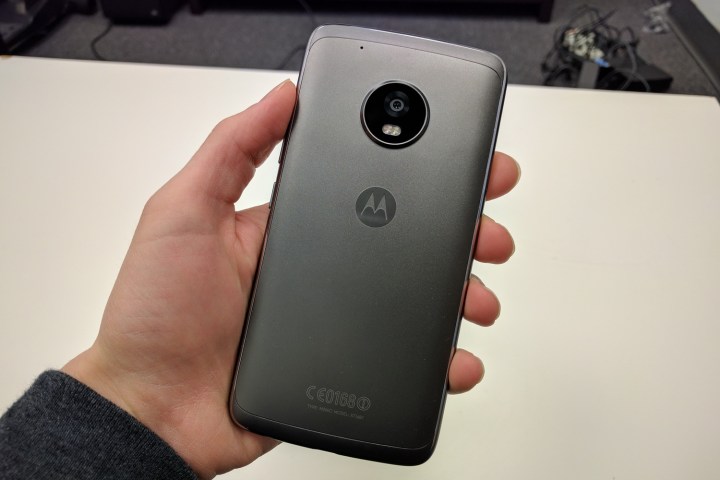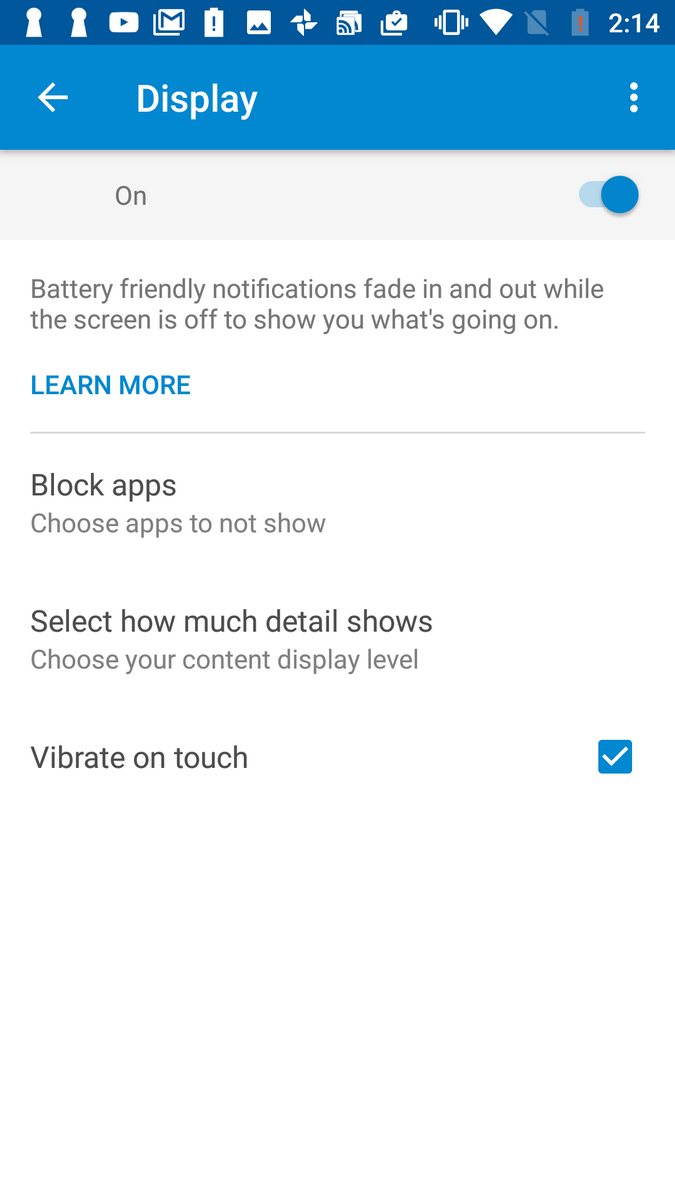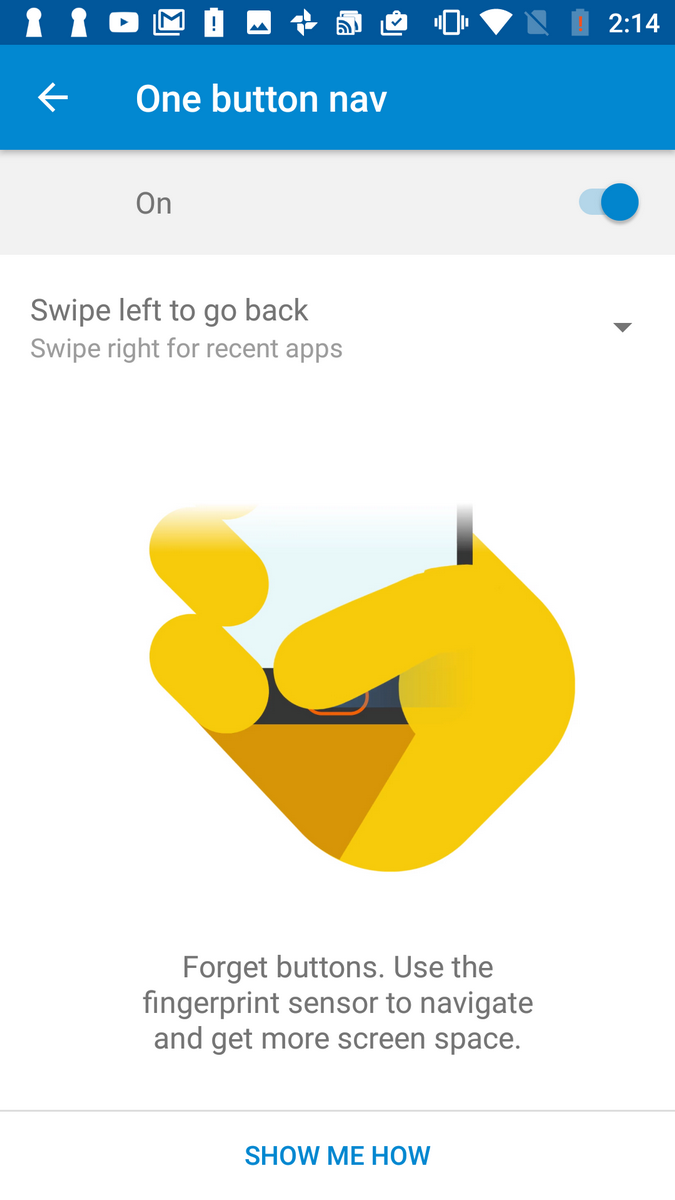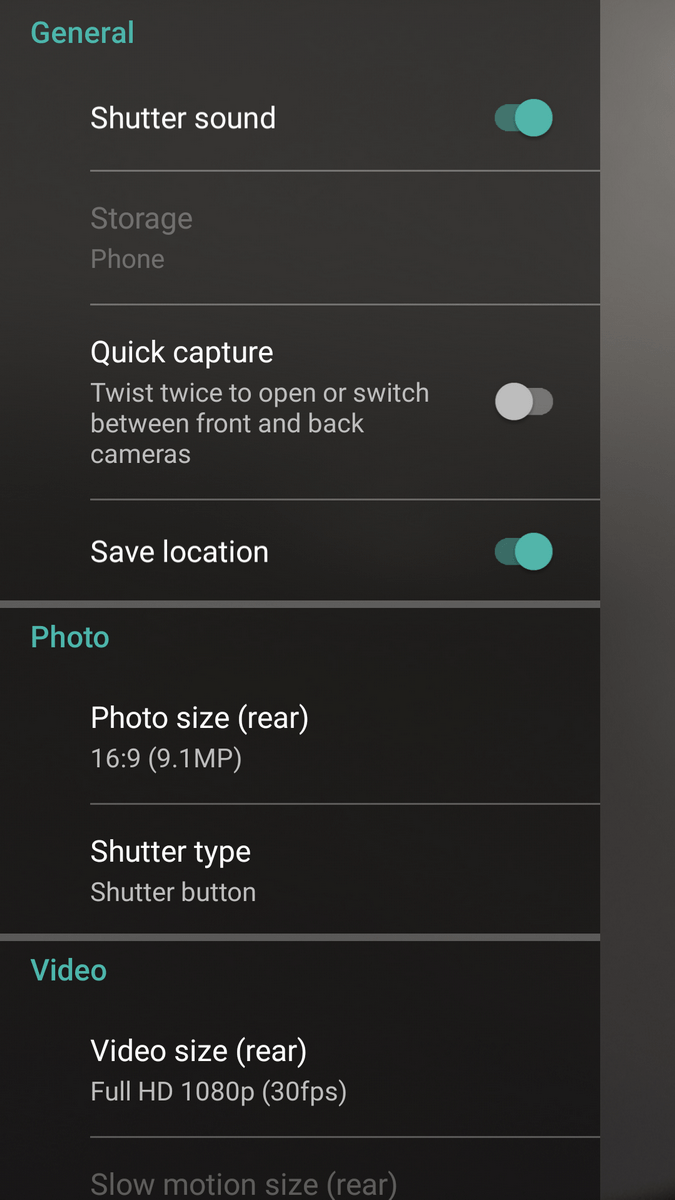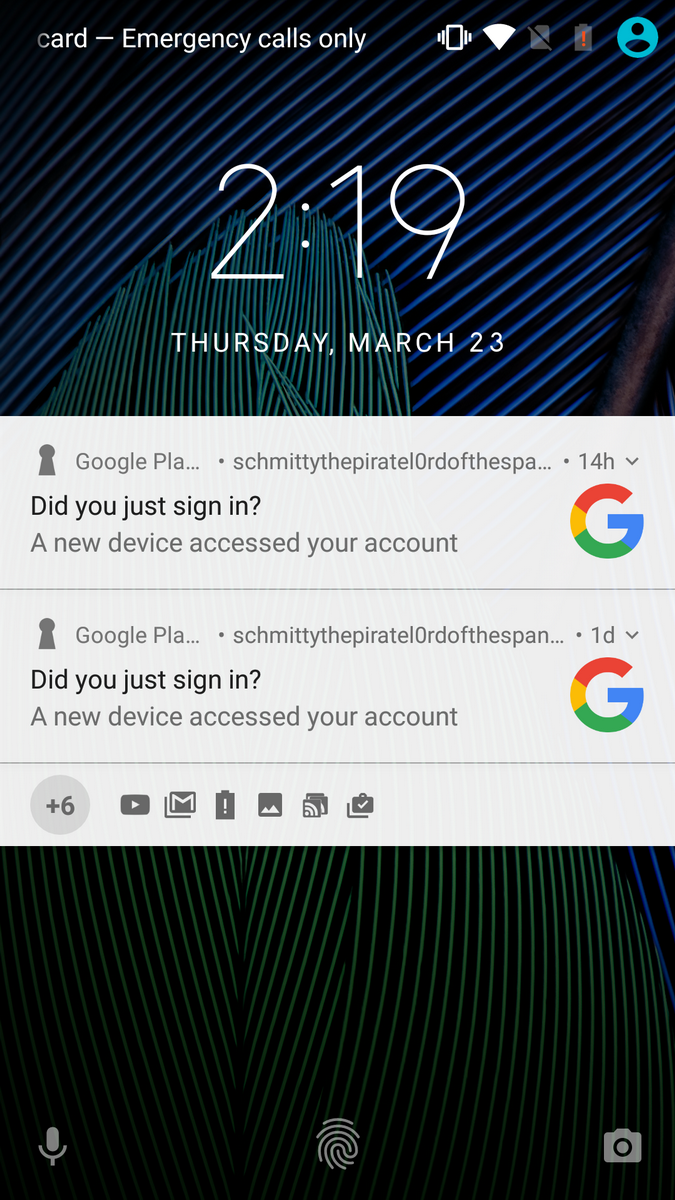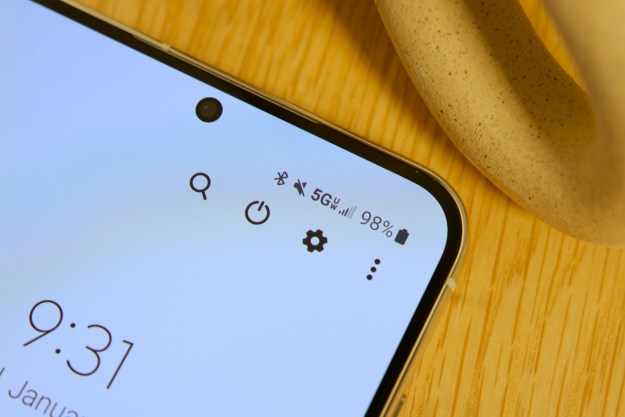
“The Moto G5 Plus faces more competitors than its predecessors, but it's still one of the best budget phones.”
- Bright screen
- Decent camera
- Nearly stock Android
- Snappy performance
- Weak speaker
- Bland design
- MicroUSB port
Last year’s Moto G4 Plus was the budget phone to beat. Lenovo’s stateside subsidiary, Motorola, put out an uncompromising budget phone that pleasantly surprised us with a camera that matched the performance of pricey flagships, a processor that crushed every task we threw its way, and a battery that lasted a full day without a recharge.
But a lot changes in a year. Now, there’s more mid-range competition than ever – especially from Chinese phone makers like ZTE and Huawei. Meeting expectations isn’t good enough. Breaking through requires innovation and an exceptionally low price point.
We tested the Moto G5 against the budget market’s best to see how it measured up.
A bland design
If you happened upon a side-by-side picture of the G5 Plus and G4 Plus, you’d be hard pressed to find similarities between them. Short of some holdover hardware and signature Moto styling, the G5 Plus shares little in common with its predecessor.
That’s both good news and bad news.
Take the G5 Plus’s fingerprint sensor, for example. In contrast to the squarish, cuff link-shaped button on the G4 Plus, the new one is oblong, indented, and much easier to press. The earpiece is narrower than the one of the G4 Plus, and the G5 Plus’s power and volume rocker are noticeably sturdier.
The G5 Plus’s removable cover is contoured and bordered at the edges, with a faux-aluminum band that runs its length. The water-resistant cover is technically metal, but it felt more like a hard plastic and a little cheap. It’s also exceptionally slippery — enough to have us longing for the grippy back cover on last year’s model.
We aren’t fans of the gigantic camera that sticks out on the back, either. Unlike the G4 Plus, which stuffed the rear sensor into an oval-shaped bulge near the phone’s top edge, the G5 takes a page from Motorola’s Moto Z Force, housing its 12-megapixel snapper in a protruding, circular eyesore. Its pitch-black color scheme clashes loudly with the subdued gray of the G5’s back cover, and looks out of place.
Luckily, not everything is a step down. We’re fans of the G5’s 5.2-inch screen size, which affords a decent amount of real estate without sacrificing compactness. The front and back are pleasingly minimalist, save a “Moto” logo beneath the earpiece and etched branding on the rear cover. The SIM card slot is more accessible — it’s on the G5’s top as opposed to behind the removable cover — and Motorola made the wise decision of retaining the 3.5mm headphone jack.
Somewhat oddly, though, Motorola opted for a MicroUSB port rather than USB Type-C. It’s not a good move considering the increasing ubiquity of USB-C, even on budget phones like Huawei’s Honor 6X, ZTE’s ZMax Pro, and Samsung’s Galaxy A series. The Type-C port allows for faster charging, a reversible charger, as well as data-transfer.
Zippy performance
The Moto G5 Plus’s design sins don’t carry over to the rest of its hardware. It features an LCD screen that has the same resolution as last year’s G4 Plus — Full HD (1,920 x 1,080 pixels). It’s got wider-than-average viewing angles, too.
The G5’s 5.2-inch screen size affords decent screen real estate without sacrificing compactness.
The phone is responsive, thanks to the 4GB of
In our testing, the Snapdragon 625 zipped through day-to-day tasks like a pro. Save the occasional stutter when swiping between the home screen and the Moto G5’s built-in Google Now feature, it didn’t exhibit lag or hiccups. Apps launched almost instantaneously, and no number of Chrome tabs, open Word documents, lengthy emails, and high-resolution PDFs slowed it down.
The benchmarks bore that out. The Moto G5 Plus scored 463 in 3D Mark’s Sling Shot Extreme test, ahead of Huawei’s Honor 6X (which scored 378) and last year’s Moto G4 Plus (384). It scored an 803 and 63,190 in Geekbench 4 and Antutu, respectively, well behind flagships like Lenovo’s Phab 2 Pro (3,176 in Geekbench 4) and the OnePlus T3 (144,131). But that’s to be expected – the Phab 2 Pro and OnePlus T3 sport Qualcomm’s newer, more powerful 800 series processors.
Typical battery life
Qualcomm claims that the Snapdragon 625 is one of its most power-efficient processors yet, but Motorola is taking no chances. It packed the G5 Plus with a 3,000mAh removable battery, which lasts roughly a day, give or take a few hours.
An especially hectic afternoon of back-and-forth emailing, messaging, and browsing with Chrome drained it to about 30 percent by 9 p.m. A second, lighter workday of browsing social media, music streaming, and reading news got it down to 50 percent. Based on our testing of the G5 Plus, most people should be able to eke out a day and a half.
The G5 Plus doesn’t take long to charge, thanks to Motorola’s proprietary TurboPower technology, which the company claims can supply up to 80 percent battery in 35 minutes of charging. Rapid charging tech isn’t as uncommon as it used to be — LG’s G6 and HTC’s U Ultra support it — but it’s still a relative rarity among budget phones, and a major plus for the G5 Plus.
Another cool feature is near-field communication, or NFC — unless you live in the U.S. Motorola made the bizarre decision to omit the tech from last year’s G4 Plus, and made just as odd a move this time around. That means that Android Pay, Google’s payments platform that lets you complete transactions by tapping in-store terminals, will only work on the international Moto G5 Plus. Bummer.
Unfortunately, the G5’s sound system doesn’t exhibit the same level of improvement. It consists of a single speaker that doubles as the phone’s earpiece. The quality is a bit better than last year’s model. It’s less prone to distortion at high frequencies, especially in acoustic tracks, but we found it equally tinny and lacking in bass. Suffice it to say, you’re better off picking up a pair of earbuds or
A solid camera
The G5 Plus’ camera packs an impressive collection of tech. Motorola outfitted the f/1.7 aperture, 12-megapixel sensor with phase detection autofocus, laser autofocus, and dual-LED dual tone flash.
With good lighting, the G5 Plus held its own against the competition, and was comparable with other budget phones like the ZTE Blade V8 Pro. We were especially impressed by the sensor’s color reproduction, which seemed a lot more accurate to our eyes than the sometimes oversaturated Blade V8 Pro’s camera. Images tended toward the cooler end of the color spectrum — the G5 Plus rendered our office carpet a little grayer than the Blade V8 Pro, for example — but skin, skies, and street corners came out crisp, bright, and clear.
Low light was a different story. The G5 Plus struggled to make out subjects indoors in our testing, and had trouble resolving fine details and shadows in our office’s fluorescent lighting. Shots in a dim storage closet turned out particularly disappointing, with enough noise and grain to render them pretty much unusable.
When it came to videos, the G5 Plus’ handily outdid its predecessor. It’s capable of shooting in
The G5 Plus’s wide-angle front camera is a solid performer, too. Selfies taken with the G5 Plus were detailed, sharp, and free of obvious grain.
The Moto G5 Plus’s camera app offers hasn’t changed much from the G4 — you can toggle things like high-dynamic range, flash, and an automatic timer. With Quick Capture enabled, two quick flicks of your wrist will launch the camera app, and two subsequent flicks switch between the front and rear camera.
A manual exposure setting lets you adjust the amount of light the G5 Plus’s sensor lets in, and what’s neat is the built-in image recognition technology recognizes barcodes and QR codes in pictures.
Close to stock software
While some smartphone makers prefer to shovel third-party apps and bloatware on users, Motorola continues the trend of offering a barebones experience, akin to stock
Any changes Motorola has made are genuinely useful. Moto Display, a tweak of
Motorola’s other contribution — Moto Actions — offers gesture-based shortcuts for launching apps and triggering settings. You can make a tomahawk-like chopping gesture to turn the flashlight on or off, and swipe up to shrink the screen for one-handed use.
Motorola also fixed a major niggle we had with last year’s Moto G4 Plus: The fingerprint sensor’s relative uselessness. Despite its prominent position below the screen, you couldn’t use it as a home button — the G4 Plus’s onscreen buttons were the only way to navigate through apps and menus.
The G5 Plus, in contrast, offers a programmable button that ties those functions to swipes and taps. A leftward swipe replaces a back button; a rightward swipe opens a list of recent apps; and a press and hold locks the phone.
Pricing and availability
Motorola adopted a confusing launch strategy for the G5 Plus.
In Europe, it’s launching the lower-end G5 alongside the G5 Plus. The screen is smaller than the G5 Plus, coming in at 5.2 inches, and the Snapdragon 430 and 2GB of
The G5 Plus’ camera struggles indoors, but is plenty capable in daylight.
If you’re able to choose between the G5 and G5 Plus, we heartily recommend the G5 Plus. It’s got a superior camera, better autofocus, faster processor, and
In the U.S., Motorola isn’t selling the G5. Instead, it’s offering two versions of the G5 Plus: A $230 model with 32GB of internal storage and 2GB of
It’s a judgment call between the two. If you want the lowest price and are willing to make do with a slightly slower phone, the 32GB G5 Plus is the obvious call. If you’re desperate for the extra storage or can’t browse the web with fewer than a dozen open tabs, you’ll come to appreciate the $280’s upgrades. We think the upgrade is worth it.
Warranty information
The Moto G5 Plus comes with a standard 12-month warranty that covers any damage that occurs as the result of a manufacturing defect. As is the industry norm, you’re on your own when it comes to accidental damage. Motorola offers a premium option, Motorola Care Accidental Protection, that includes coverage of additional mechanical failure and accidental damage (e.g., water damage and broken screens). It’s available for $70 for 15 months or $100 for 24 months). Separately, it offers an extended service plan for $20.
Our Take
The G4 Plus was one of our favorite budget phones, and the G5 Plus meets the high bar set by its predecessor — mostly. In a market filled with low-cost competitors that match — and in some cases best — the G5 Plus’s design, camera, sound, and processor, it’s not quite as compelling as it once was.
Is there a better alternative?
Possibly. The Moto G5 Plus’ main selling point is the nearly stock
Still, If you prefer nicer design over near-stock
If you miss the old grippy Moto G4 design, you’re in luck. The $230 ZTE Blade V8 Pro is another solid budget option that looks just like it. It has a 5.5-inch, Full HD screen, Snapdragon 625 chip, and dual 13-megapixel rear cameras that can create fun images with bokeh effects.
How long will it last?
The G5 Plus should last about two years. In terms of software updates, Motorola used to be very reliable — even with monthly security patches — but it has fallen back a bit under Lenovo. The company chose not to update the 2014 Moto X and 2015 and 2014 Moto E to Marshmallow – even though the newest of the bunch was less than eight months old. In July, it refused to commit to Google’s security patches – monthly updates that secure
To be fair, Motorola announced that 15 of its phones would be updated to 7.0 Nougat by the end of this year, and it has a better reputation than ZTE or Honor for timely updates. But know that if you pick up a G5 Plus, it might be a while before it gets
Should you buy it?
Yes. The Moto G5 Plus is a fine budget phone, but the competition has never been tighter. Take a look at the range of similar options from the likes of Huawei and ZTE.
Still, if you’re looking for a phone that does everything “well enough” on stock
A previous version of this review erroneously claimed that the G5 Plus had
Editors' Recommendations
- Does the Moto G Power have NFC?
- The best Moto G Power 5G (2024) cases: 7 great choices
- The best Moto G 5G (2023) cases you can buy
- New OnePlus budget phone comes packing 2 super-rare features
- If you like cheap phones, you’ll love these 2 new Moto G options




